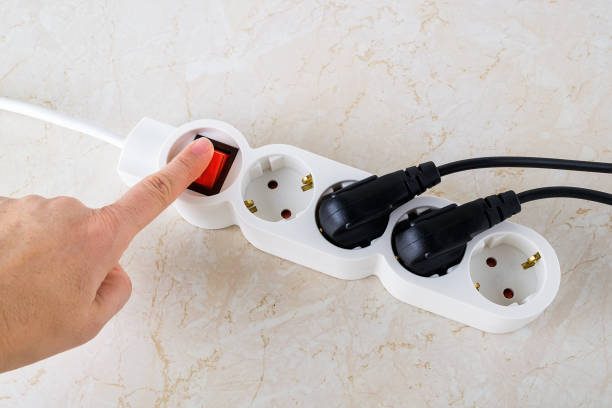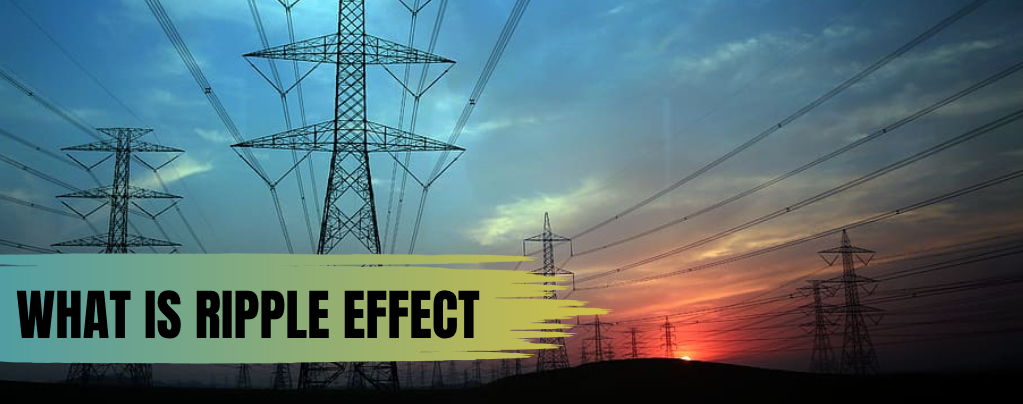
Explore common reasons why LED lights won’t turn on, from faulty wiring and incorrect installations to dead bulbs and power […]

A ripple effect is an electric isse first detected in LED lights and refers to the sudden flickering of the light output. Ripple effects happen when electricity suppliers reduce the amount of energy they are sending to a certain geographical area.
This happens in an attempt to offset on-peak demand for electricity and the capacity of the grid to accommodate and supply power.
On-peak demand usually occurs when most people are at home and are consuming large amounts of electricity. It often coincides with the morning rush, between 7 and 10am, before leaving for work and schools, and also with an evening rush, between 5 and 10pm, upon returning from work and settling down before bed.
As the electricity suppliers lower the amount of energy provided to the area to meet the electricity demand, all the households in the area start receiving less energy. As a result, the electric current passing through the LED lights decreases, and since LED lights already consume very small amounts of power, this decrease causes a disturbance in the output and leads to the flickering of the lights.
To put things into perspective, standard halogen bulbs use approximately 50 Watts, while LED bulbs, although known for their solid features and durability, consume around 5Watts.
It is important to remember that there are other factors which could contribute to the severity of the ripple effect, such as the operation of the air conditioning system. Air conditioners consume large quantities of electricity which it draws from the household current. Especially at start-up, the units draw a considerable amount of current that effectively lowers the currents going to the lights.
There are a variety of other reasons that could cause a ripple effect in LED lights, but it’s worth noting that light flickering can actually be quantified, measured and controlled to limit the effect of flickering using special solutions.
There are three main ways to help resolve the ripple effect in your home, listed below from the least to the most cost efficient way to tackle the issue. These solutions will vary by area of residence and severity of the problem.
The first option is to get more electrical current to your lights. This can be achieved by turning off the dimming capability. The lights will effectively pull more current as they provide higher output, limiting the flickering problem but effectively increasing the power consumption.
The second option involves installing a load bypass filter. This device is usually installed on the first lamp of each circuit and/or behind the wall switch. The bypass filter improves the dimming of the LED lights and the switching performance of the lights causing issues.
The third option which tackles the problem directly is installing a ripple signal filter. This filter is specifically tuned to eliminate the ripple effect signal frequency and is typically installed on the electrical board.
Although it’s usually said to be imperceptible in LED lights, long exposure to flickering light can have a range of effects on humans, going from unnoticed effects, to slight discomfort all the way to significant adverse effects.
The range of effects vary with the detectability of the light flickers. The human brain can detect light flicker frequencies up to 100 Hz and 200Hz, from LED drivers output ripple, even though they are often not visible to the naked eye.
Prolonged exposure to constant flickering of light could cause neurological problems for sensitive people. This problem is quite common for adolescents, and is a very uncomfortable problem to have for yourself.
Symptoms are generally headaches, eye tension, vision impairment, and in rare cases, epileptic seizures could be a potential complication. That’s why it’s advisable to completely avoid flickering lights.
The Ripple effect in LEDs can also have a significant negative impact on the LED driver’s life.
High ripple effects caused by fluctuations in the electric current could weaken or at the least shorten the lifespan of LED drivers or power supplies, especially when this is a frequent occurrence. The LED driver is an essential component of the system and crucial to its operation, damaged electronics in the driver from the ripple effect can severely disrupt the proper functioning of the LED.
LED lights are generally quite efficient, however, a high ripple effect can drastically reduce the efficiency of the lights.
Ripple effects are a common problem for LED lights and can be caused due to a number of reasons, most of which have simple solutions. Considering the negative implications the ripple effect has on our health and on the lighting system, the issue should not be ignored.
Once detected, proper measures need to be taken to get to the root cause of the problem and to find the appropriate solutions. Below is a list of some of the causes of the ripple effect.
The main cause of the ripple effect is linked to the fluctuation of the electrical distribution to a particular area at a given time, due to high-peak and off-peak electricity demands.
To manage the varying electrical current in a space, appliances may draw more or less current to regulate their operation, leaving LED lights with weaker currents that cause them to flicker.
Effectively when there’s a sudden drop in electrical supply to the household, provided for the same high number of operating appliances, the ripple effect is bound to occur within the lights.
Another common reason for the ripple effect is from using a driver that does not match the specifications of the LED light. Manufacturers’ recommendations for LED drivers should be followed to avoid operation problems.
Understanding the topology of LED drivers and the complete characteristics of the system are essential to avoid flickering issues in particular and to maintain high quality of operation in general.
Overloaded circuits with several electronics and appliances could cause frequent instabilities in the current distribution and lead to the occasional flickering of LED lights.
Although LED lights generally operate at low wattages compared to traditional sources of light, general over-use of electrical appliances and equipment, especially during off-peak electricity periods, can cause the overall circuits in the house to draw more electric current. This limits the currents for LED lights causing them to flicker.
Simple issues like loose wiring could lead to unstable or fluctuating current at the light bulbs, causing them to flicker. Professional help should be seeked from a certified electrician to tighten or adjust loose circuiting and wiring.
How to minimize the ripple effect
Although ripple effects are sometimes unavoidable, they can occur due to several factors. There are, however, possible solutions to limit and avoid the ripple effect within the household. This depends on the severity of the cause and implications of the ripple effect in the area.
Possible solutions are:
There are several reasons why LED light flickers. Some of these reasons include: incompatible drivers, on-peak and off-peak electricity fluctuations, unmaintained circuits, loose wires, overload electricity usage.
Depending on the frequency and severity of the occurrence, flickering lights could pose a major problem to photosensitive individuals.
Constant and high intensity ripple effects could also cause headaches, eye stress, and other health issues over time.
The solution depends on the occurrence of ripple control in the area, installing matching LED drivers and high quality dimmers are great solutions.
If the problem persists, other solutions can be sought, such as reducing electricity usage, fixing loose wires, and installing a ripple management device.
This depends on the frequency of flickering, it dictates whether the light flicker is visible or invisible to the human eye.
However, the wide range of frequencies at which LED lights flicker – between less than 10 percent and 100 percent – will make the effect more visible or noticeable.
No, ripple control is the method used to reduce electricity usage in a particular area. The effect of this ripple control could cause the lights to flicker.